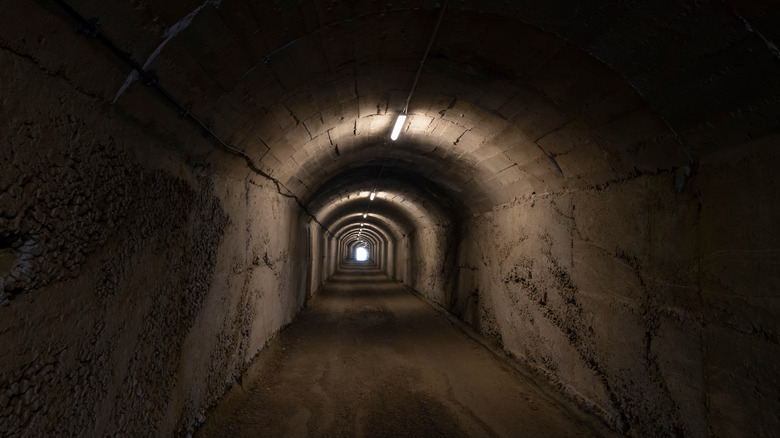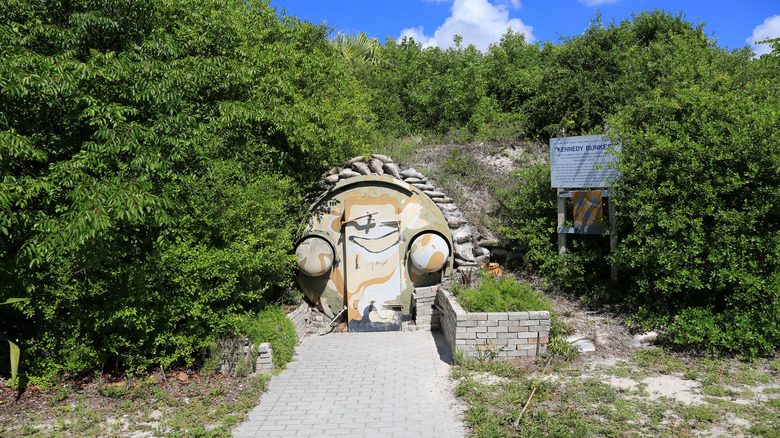What The President's Escape Plan Looks Like If The U.S. Ever Got Attacked
So far in history, the need for a U.S. president to escape impending danger to the capital has been a relatively rare one. James Madison and Abraham Lincoln are more or less the only presidents to have had an enemy force at their doorstep (via Smithsonian Magazine). Because of the relatively slow nature of troop movements versus the evacuation of one person, a president at this time would have needed little more than advance warning. By the mid 20th century however, an attack could reach any location at any time with anywhere from hours to minutes of reaction time (via NPS).
According to Infographics, the construction of nuclear bunkers began under the Eisenhower administration. At a time when many Americans with means and enough fear had fallout shelters of varying quality, presidents and their staff began to have massive underground complexes available to them. These were built across the country to ensure that safety was readily available regardless of location. Even with the end of the Cold War and the comparatively lesser threat of nuclear conflict, these protocols remain vital components in how America responds to any given threat (via NPR).
Presidents must have an escape plan
In order for the president to have effective control of the country and communicate with different military installations, the bunkers require secure telecommunications and (in the modern age) reliable access to the internet. Such facilities are available directly below the White House if the capital cannot be evacuated (via The New York Post). If there is enough time, then the president will instead board an aircraft designed to act as a mobile command center. From here they will either remain airborne or be transported to a designated facility or ship along with other political and military leaders (via Washington Post).
While that is the official protocol, presidents have also had solutions tailored to them when they traveled to states such as Florida (where due to the high water table, large concrete shelters are not possible). President Trump for instance maintains small bunkers that the previous owner of his Mar-a-Lago residence had dug into the coral below it (via BBC). Eight miles away from that is Peanut Island, where according to the Palm Beach Post a bomb shelter was built for President Kennedy in case an attack occurred while he was on vacation (pictured above).

